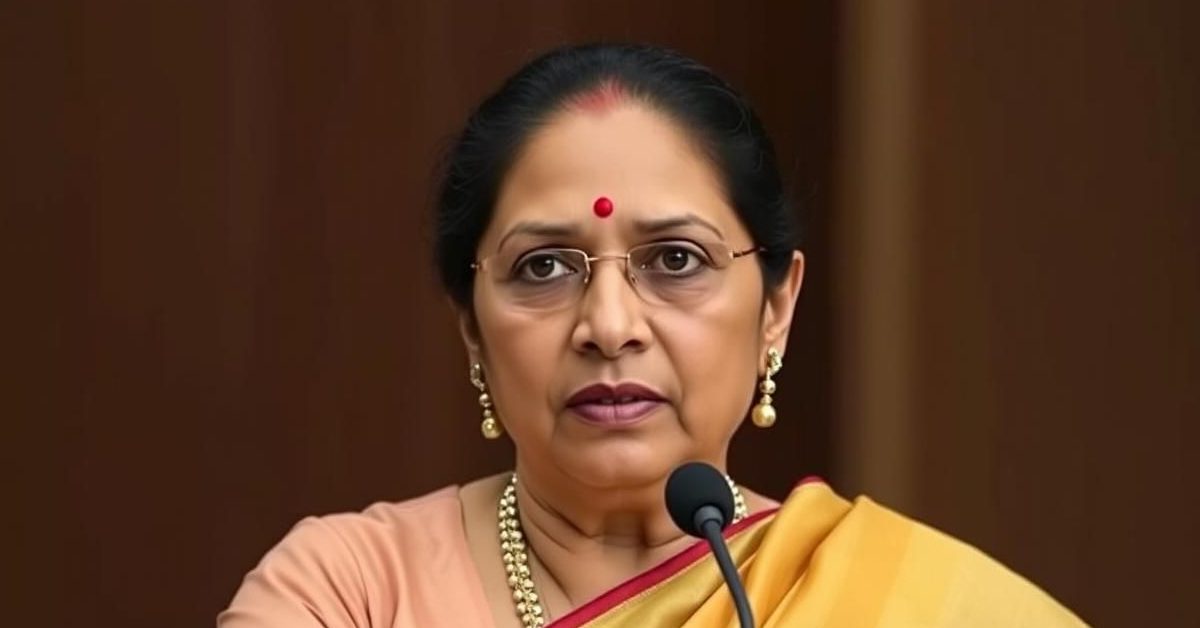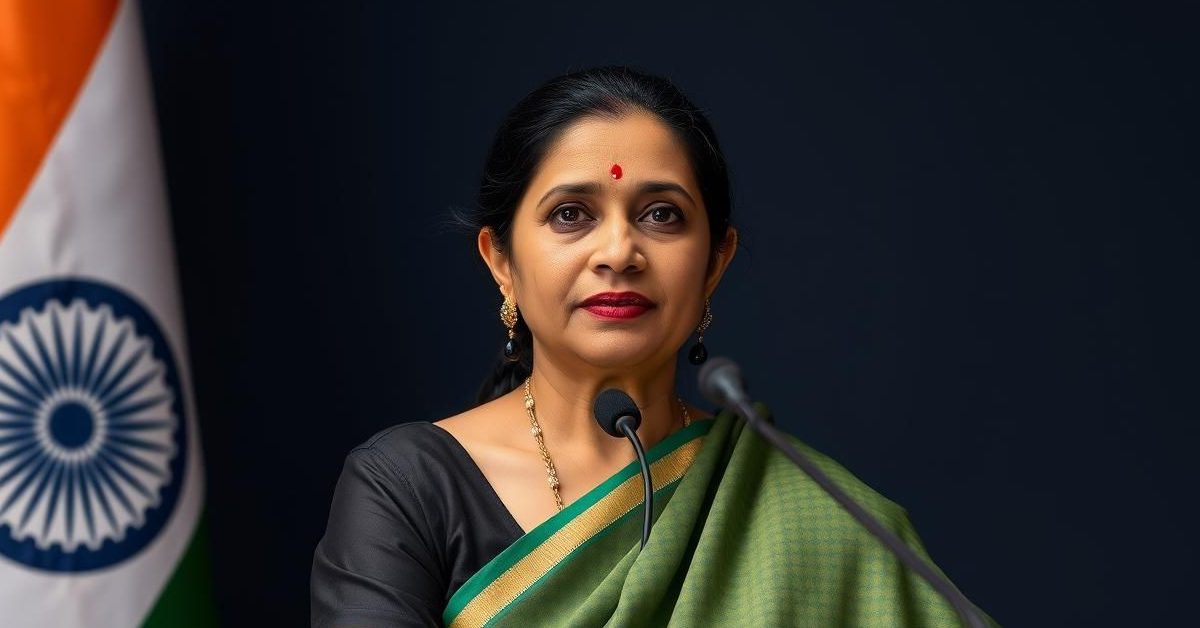India’s Economic Resolve: Finance Minister Nirmala Sitharaman on Trade, Growth, and Future Reforms
Union Finance Minister Nirmala Sitharaman recently offered a profound insight into India’s economic trajectory and its diplomatic engagements, notably with the United States. In an extensive interview with *The Financial Express*, she underscored the nation’s robust economic buoyancy, a factor she believes is pivotal to its current standing and ambitious future. Her discussion ranged from embracing a potential India-US trade deal to foreshadowing a wave of “second-generation reforms” designed to propel the nation forward.
Navigating High-Stakes US Trade Dialogues
The interview delved directly into the complexities of international trade, specifically addressing former President Donald Trump’s public assertion that the US would “open up” India’s economy, even as trade talks were still in progress. Rather than viewing this as a challenge, Minister Sitharaman articulated India’s strategic perspective. She emphasized the United States as India’s foremost trade partner, highlighting that solidifying agreements with powerful economies like the US is crucial for India’s accelerated growth and its grand vision of achieving ‘Viksit Bharat’ (Developed India) by 2047. Her proactive stance was clear: “Yes, I’d love to have an agreement, a big, good, beautiful one; why not?” This demonstrates a willingness to engage constructively rather than react defensively.
India’s Non-Negotiable Trade “Red Lines”
While keen on fostering deeper trade ties, India has meticulously defined its “red lines” to safeguard vital domestic interests. Minister Sitharaman confirmed that the negotiating teams meticulously incorporated industry concerns. Top among these protected sectors are agriculture and dairy. A high degree of caution has been exercised to ensure that any trade agreements do not undermine India’s vast agricultural base or the livelihoods of its farmers. She affirmed that no concessions in these areas would be made without the explicit consent of the Department of Agriculture, underscoring a commitment to protect vulnerable domestic segments.
Dispelling the “Tariff King” Misconception
A persistent narrative labeling India as a “tariff king” has often emerged in international trade discussions. Minister Sitharaman vehemently refuted this, providing compelling data. She pointed out that India operates with a limited set of duties, including zero tariffs, and has implemented significant tariff reductions in recent budgets – both the primary July budget and the interim February one. The effective tariff rates, she asserted, remain considerably below the limits approved by Parliament and are well within the World Trade Organization (WTO) boundaries. For India to be characterized as a “tariff king,” she concluded, is “absolutely unjustified.”
The Finance Minister also acknowledged that opportunities for further tariff reductions might exist without detriment to domestic industries. She credited Commerce Minister Piyush Goyal for his meticulous approach, ensuring deep consultations with various sectors, including automobiles, both before and during the trade negotiations. This collaborative strategy aims to strike a balance between global integration and national interest.
Strategic Approach to Non-Tariff Barriers and Domestic Procurement
The conversation broadened to encompass non-tariff concerns, such as Intellectual Property Rights (IPR), data localization, and government procurement – issues that have increasingly become intertwined with traditional trade negotiations. Minister Sitharaman articulated India’s consistent position: trade negotiations should not be primarily driven by these broader issues. However, recognizing their growing prevalence, India now adopts well-considered, discrete positions on matters like environmental standards, gender equality, and carbon taxes.
Crucially, she highlighted India’s unique market requirements as an emerging economy. On government procurement, she emphasized the necessity for significant “carve-outs” to ensure continued support for Micro, Small, and Medium Enterprises (MSMEs) and start-ups. India’s domestic procurement policies are inherently designed to provide a crucial hand-holding mechanism for these vital sectors, a support system that cannot simply be dismantled to accommodate external demands.
Transforming India’s Manufacturing Landscape: Automation & Skill Evolution
Addressing the evolving share of manufacturing in India’s GDP, Minister Sitharaman delved into the transformative shifts occurring within the sector. She reiterated the government’s commitment to supporting both labor-intensive units, such as handicrafts, and those embracing automation. The traditional divides between labor-intensive and capital/technology-driven manufacturing are blurring rapidly.
She offered the example of the knitwear industry in Tirupur, a traditionally labor-intensive hub. Here, Artificial Intelligence (AI) is being integrated into production, significantly boosting productivity. While this might reduce the need for certain manual roles, units are not retrenching staff. Instead, they are actively reskilling their workforce for new, gainful employment opportunities. This fluidity in the labor market, she explained, necessitates continuous skill updates across industries, as some roles become more movable and fungible, leading to an upward mobility of the workforce.
RBI’s Proactive Stance and Undeniable Economic Buoyancy
The discussion also touched upon the Reserve Bank of India’s (RBI) recent monetary policy decisions, including a sharp cut in the policy repo rate and a reduction in the Cash Reserve Ratio (CRR), which surprised many. Minister Sitharaman dismissed interpretations of these moves as “knee-jerk reactions” or indicators of an economic slowdown. She asserted that the RBI’s “front-loading” of growth-oriented measures is based on meticulous analysis and detailed documentation, transparently communicated in their monetary policy meeting minutes.
She vehemently argued against “overstating” the absence of economic buoyancy. India’s consistent growth, exemplified by institutions like S&P revising India’s FY26 growth estimate upward to 6.5%, and robust Goods and Services Tax (GST) revenues (consistently crossing 7% of GDP), are irrefutable indicators of a vibrant economy. While acknowledging the aspiration for even higher growth, perhaps 10%, she stressed that India’s 6.4% Gross Value Added (GVA) for FY25 is remarkable given the challenging global economic climate, especially when compared to the 2-2.5% growth observed in Europe and some Southeast Asian nations.
Minister Sitharaman concluded by celebrating India’s resilience. She urged recognition for the efforts of Indian citizens who continue to drive progress despite significant global headwinds. In a world where export-driven growth strategies are faltering, India’s own exports are performing commendably, further cementing its unique and strong position on the global stage.















